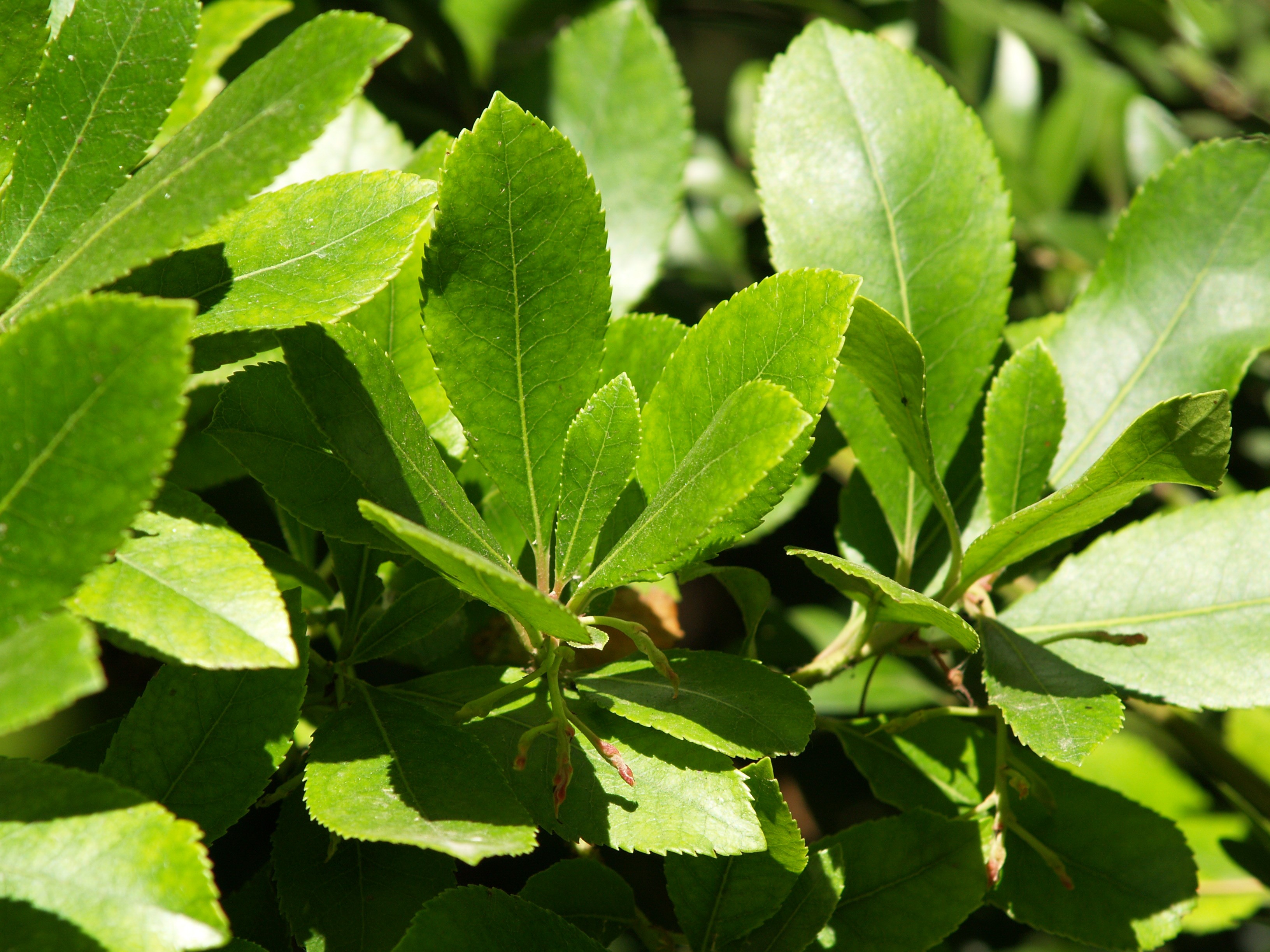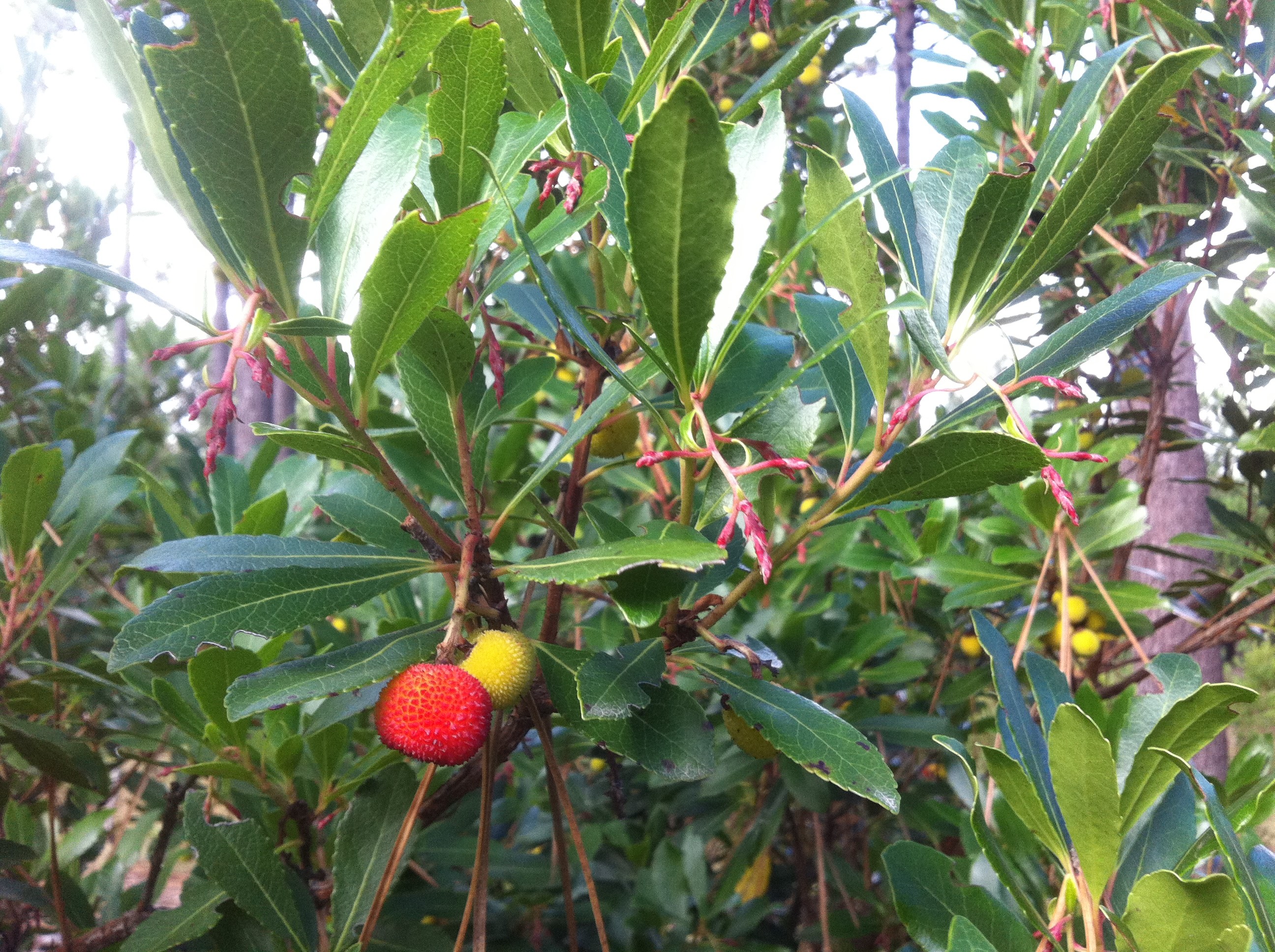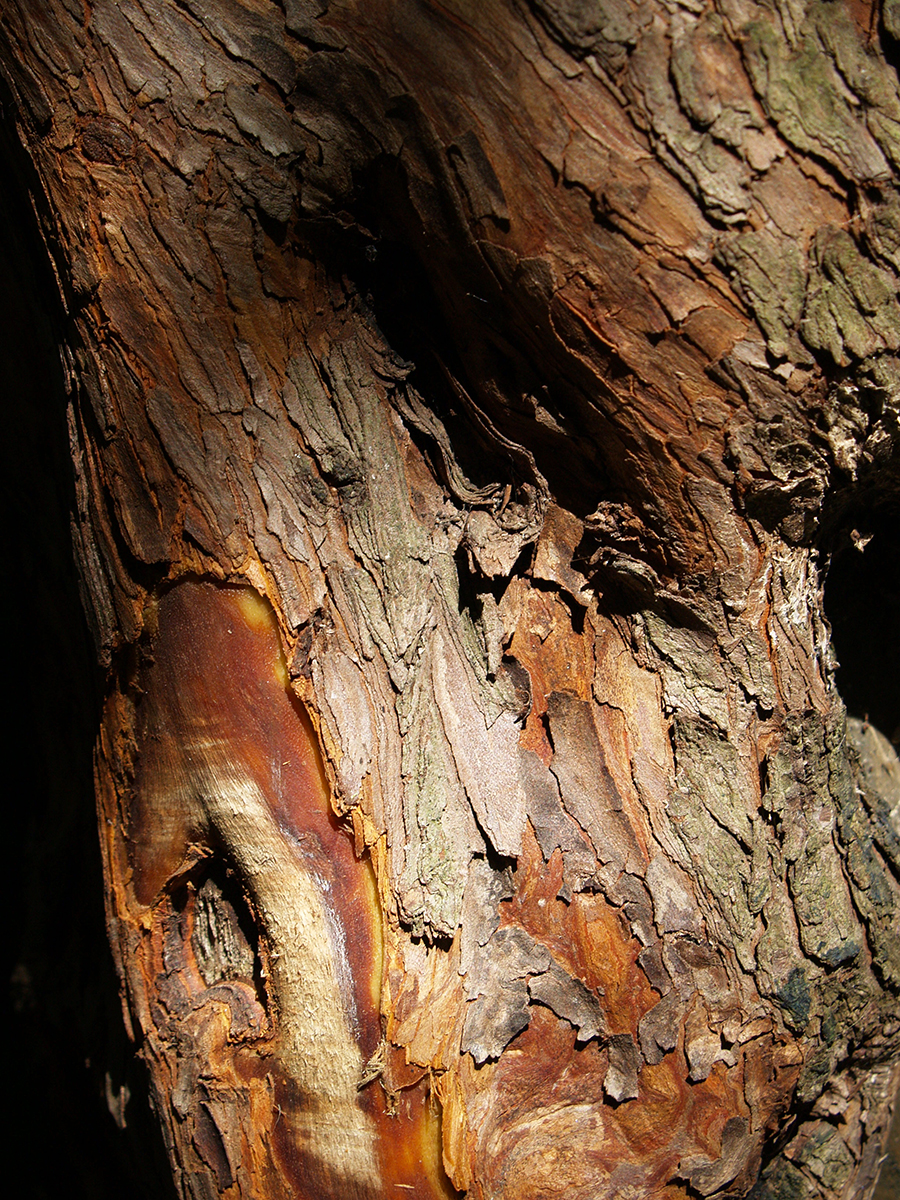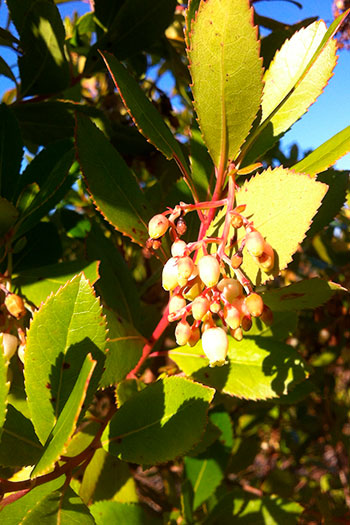
Strawberry Tree
Arbutus unedo
Family and description
From the Ericaceae family, this is an evergreen shrub or small tree that can reach a height of about 6 m.
Its crown is round and irregular.
It has a greyish brown tortuous trunk, with a tendency to peel in older specimens. The branches are erect and reddish when young.
The leaves are green, simple, alternate, 6 to 10 cm long, lanceolate or oblong, with a serrated margin and a waxy glow on the top surface.
The flowers that are arranged in panicles, with small chalices and white corolla with 5 lobes, bloom from September to February, simultaneously with the fruits of the previous year which take approximately 10 months to mature.
The fruit – strawberries – are berry type, 7 to 30 mm in diameter, round, with a granular surface, red, orange before fully ripe, with yellow flesh. They form at the end of autumn, reaching maturity by the autumn of the following year.
Origin and habitat
It is an autochthonous Mediterranean-Atlantic plant, distributed throughout the Iberian Peninsula, Western and Southern Europe, the Middle East, North Africa and Macaronesia. In Portugal it is found almost throughout the entire country, with the largest populations in the south, in the Caldeirão and Monchique mountains.
Strawberry trees grow spontaneously in oak and cork oak and pine forests, often on rocky soils. Tolerant to shade, this plant likes mild climates and is able to withstand climates with low rainfall and dry summer periods. It grows on both acidic and limestone soils and can occur at altitudes of up to 1200 metres.
Uses and curiosities
Its fruit is much-loved and is used in the production of a strong kind of brandy – Aguardente de Medronho – a regional product typical of the Algarve.
The leaves and bark of the strawberry tree contain tannins that are used to tan the skin. Its wood is good for turning and an excellent fuel.


